Herbal pillow with your own hands. Secrets of good sleep - filling the pillow with herbs
In some hinterlands of Russia, in villages and villages, the traditions of stuffing mattresses and pillows with medicinal herbs have survived to this day. For us, city dwellers, such a bed, of course, is a curiosity. However, its usefulness is not in doubt.
In addition to the healing effect, the smell of herbs helps to distract from the hassle and bustle of everyday life. Inhaling the aroma, we can be carried away in our thoughts to a carefree childhood filled with the smells of freshly cut hay or flowers. summer meadow, to remember the first love or a recent happy vacation.
Pleasant memories create an appropriate emotional mood, help you fall asleep peaceful, and therefore wake up rested and full of energy.
In the last article, we studied beneficial features and contraindications of herbs most suitable for sleep pillows, we learned to choose the ones we need, according to our needs: from, for colds, to relieve fatigue, to increase efficiency.
Today we will talk about how to make a pillow from herbs.
If you collect herbs yourself, think about the good, so that your good energy will enhance the healing properties of plants. In the old days, it was customary to accompany with prayers and songs any good deeds, especially those aimed at healing. It is better to collect herbs away from highways and city smog.
The pillow may have different sizes: normal to tiny. The more aromatic and active the plant (rosemary, sage, hop cones), the smaller the pad should be. Your imagination will tell you the shape: round, square, oval. If you have cervical osteochondrosis, the form of a roller is preferable, fill it with herbs more tightly.
For the main pillowcase (cover or pillowcase), only natural (“breathable”) and dense fabrics (cotton, linen, teak) are used so that the fillers do not seep and prick the face and neck.
Sew a pair of removable pillowcases from cambric, poplin, calico, silk. They can be worn over the cover, and changed for washing.
Herbs that give volume to the pillow
A feature and disadvantage of an aromatic pillow is the rapid caking of herbs. To avoid this, herbs are used that keep their shape - sedge, heather, bracken, straw.
The addition of these herbs also helps to avoid overdosing when you want to have a big pillow, and the selected herbs are strong (rosemary, sage, hop cones) and strong-smelling (mint, oregano, elderberry).
 heather will not only add volume to our sleepy pillow, but it will also calm the nerves, help recovery from respiratory and viral diseases, and make it easier to breathe in a dream when coughing. Heather is harvested in August-September (flowering tops).
heather will not only add volume to our sleepy pillow, but it will also calm the nerves, help recovery from respiratory and viral diseases, and make it easier to breathe in a dream when coughing. Heather is harvested in August-September (flowering tops).
Sedge is considered a little studied medicinal plant, but even our distant ancestors began to use sedge to fill mattresses and pillows, noticing its beneficial effects on health.
Sedge usually grows in damp places, in marshes, and comes with both small and large leaves. The small-leaved mattress turns out to be softer, but caking faster. Large-leaved sedge will give the mattress or pillow elasticity, and will allow you to maintain volume for a long time.
Knowledgeable people advise making 2 mattresses: one with large leaves (placed down), the second with small ones (placed on top). The same goes for pillows.
Pillows and mattresses stuffed with sedge can reliably serve for at least a year. They need to be shaken up from time to time. If from spring the sedge is constantly mowed in a certain place, then up to late autumn it will give you excellent stuffing raw materials, without admixtures of last year's blades of grass.
bracken fern in many areas it is considered a weed that is very difficult to get rid of. Nevertheless, the plant has long gained popularity as a cheap construction (in roofing), bedding material for livestock, as a fertilizer and fuel.
In California, bracken was adapted for weaving baskets, in European countries - for filling pillows and mattresses. The benefits of a fern bed are explained by its bactericidal, stimulating, antipyretic, analgesic properties.
Dry, grind, mix, fill ...
We dry. Before use, dry the plants thoroughly so that mold and fungus do not interfere with our recovery. Usually, the herbs are dried in the shade, in a ventilated place, spread out in a thin layer and stirred several times a day. Herbs are ready when they break easily and rustle when touched. If you use roots, then it is better to dry them in the oven.
We grind. We break or cut the plants into pieces of 1 cm. The herbs that give the pillow volume can not be particularly crushed.
We mix. Use the recipes from the previous article or be guided by your intuition. At the same time, be sure to listen to your feelings - you should like the smell of grass. Also, look at the combination of flavors.
We stuff. For a pillow measuring 20 * 20 cm, you will need up to 500 g of dry filler. If you have not used up all the grass, then put the rest in a paper bag or a glass tightly closed jar, it will come in handy for “fresh pillows”, for baths, tea (in the absence of allergies and contraindications).
How to use herbal helper
Herbal pillows are short-lived and serve up to 2-3 months: medicinal plants gradually lose their healing properties.
Day rest pillow can be filled with tonic and restoring herbs: wormwood, lavender, geranium.
Before bedtime shake the sleeping assistant well to enhance the aroma of herbs.
small pillow put next to the head, under the main pillow or put in a pillowcase.
Storage: put the pillow after each use in a plastic bag in a dark place to keep the fragrance of plants longer.
Will last a long time coniferous pillow: its contents are changed during the year 1 or 2 times. ahead New Year, take the opportunity and before throwing away the tree after the holidays, collect the needles and use it to fill the pillow. Fir needles are more delicate and not so prickly when harvesting as pine needles.
Pine phytoncides have a bactericidal, anti-inflammatory, stimulating effect, have a beneficial effect on the nervous, cardiac and vascular systems. Coniferous pillow will help with insomnia, hysteria, colds, flu, facilitate breathing during sleep when coughing, improve brain function.
Course duration the use of the pillow has limitations: from one to three weeks. After that, you can replace it with a new one, with a different composition. The course is repeated 2 or 3 times a year.
Do not store the herbal pillow for more than a year.
In Russia, the procedure for updating their straw beds was necessarily carried out in mid-October, on the day of St. George. By this time, threshing was over, and there was no shortage of straw.
Last year's straw, which had turned into dust, was shaken out of mattresses and pillows. It was customary to burn it. The bedclothes were washed and dried, then stuffed with fresh straw, fragrant herbs or flowers prepared in the summer were added to it.
If, using a scented pillow for sleeping, you feel unwell, headaches - stop using it.
PILLOWS IN VEGETABLE DOWN
Our great-grandmothers knew how to make them from cattail, willow-herb or thistle. This process is quite laborious, but the result was worth it. The pillow turned out to be surprisingly light and could serve for more than one year.
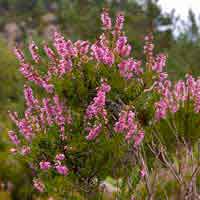 Cut off the cob cattail when they turn dark brown (in September). For drying, they left it in the sun, and in bad weather under a ventilated canopy.
Cut off the cob cattail when they turn dark brown (in September). For drying, they left it in the sun, and in bad weather under a ventilated canopy.
When the tips of the cobs began to bloom, becoming fluffy, they were put in a pillowcase and immediately sewn up, leaving only a small hole. They dried it by hanging the blank of the pillow near the oven.
When the cobs were completely dry, the fluff unfolded and filled the pillowcase. After that, the stems were carefully removed one by one through the hole. The pillow was sewn up. Moreover, the ears of the spring harvest were never used, because they probably contained insect larvae.
Properly collected and well-dried cattail fluff is not subject to dampness and mold.
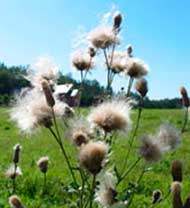 If there was no cattail, they took fluff thistle. Preparing it is quite difficult. Flower heads were cut immediately after flowering, when white tassels appeared in place of the flowers.
If there was no cattail, they took fluff thistle. Preparing it is quite difficult. Flower heads were cut immediately after flowering, when white tassels appeared in place of the flowers.
The work required patience and perseverance: they pulled out the fluff with their hands, filled the pillowcase, sewed it up and dried it on the stove.
Down was collected in some places Ivan tea(Fireweed angustifolia). The seed pods were collected before opening into a bag, which was tied with a knot. A bag of raw materials was dried in the sun or placed on an oven. Dried boxes burst, light fluff filled the bag.
For the best department the fluff bag was shaken and beaten with wooden sticks, turning it upside down. At the same time, the boxes fell to the knot of the bag, and the fluff rose up. It remained to untie the knot and pour out all unnecessary.
At the end of the article MASTER CLASS:
How to make a decorative pillow from herbs with your own hands
We will need:
So let's get started:

1. We put cardboard heart templates on the fabric, circle them with a pencil and cut them out. We have three hearts.
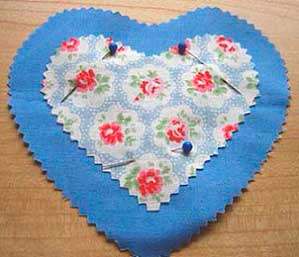
2. We fix the smallest heart on a large one with pins with heads. We sew a small heart to a large hand or machine seam.
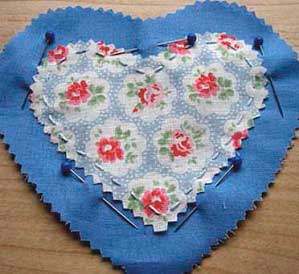
3. We sew two large hearts together, leaving a small hole at the top, through which we will lay the herbs.

4. Insert a paper funnel into the hole and fill the pillow with fragrant grass. Pictured is lavender. Sewing the hole by hand.

5. Sew on a ribbon loop at the top. Now the pillow can be hung up and decorate the interior of the room.
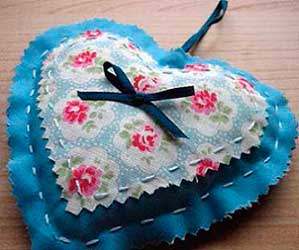
6. K little heart sew on a cute bow using the same ribbon.
It turned out to be a nice pillow. Sewn with your own hands, filled with the healing power of herbs and charged with your kind thoughts, it can become a pleasant and useful gift.
Give your loved ones your care and love!
Ancient recipes for herbal preparations for the treatment and promotion of health were once passed down from generation to generation. The healing power of herbs was used not only for the preparation of decoctions and infusions. Aromatherapy was also known and widely used. It's time to remember the forgotten grandmother's secrets.
It is no secret that modern man is almost constantly under the influence of electromagnetic waves, the harmful effects of which have been proven by scientists. Take a look around! Computers, WiFi, Cell phones, gadgets on the bedside table, an electronic alarm clock winks green eyes in the night ... All this can lead to a gradual deterioration in health. And the first sign of trouble in the body is poor sleep.
Sleeping pills are addictive and stop helping. And since they can cause various disorders of the digestive system and the cardiovascular system, doctors often do not recommend taking them. It is not surprising that in recent times become so popular unconventional methods wellness treatments such as aromatherapy.
Essential oils, aroma lamps are in almost every home. Herbal infusions and herbal teas with mint and lemon balm are drunk by many people at night. It's time to remember another old way to good night.
What is a herbal pillow?
Who had to sleep summer night on the fresh air, inhaling the aromas of herbs and flowers, he knows what a sound sleep can be in such conditions. Our great-grandmothers and grandmothers were, of course, closer to nature, knew how to use its gifts, help their health. They knew how to preserve the aromas of herbs and increase their strength with herbal pillows. At all times, they were considered good helpers for insomnia and other health disorders.
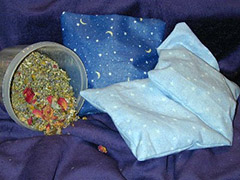
Ordinary pillows in the old days were stuffed with down, feathers, wool or hay. If mint, sage, lily of the valley, lemon balm, catnip were added to the hay, then such a pillow filled the whole house with spicy aromas.
Herbal pillows were made not only to sleep on them. Sleep more pleasantly on the softest down pillow. Special bags of various shapes were stuffed with herbs, they were placed at the head of the bed. But the fact is that when such a pillow is heated from heat human body and crumples with the movements of the sleeping person - the aroma is much stronger.
Herbal pillows can perform different tasks: relieve fatigue, soothe, relax, improve heart function, make breathing easier, help with snoring. When choosing, do not forget to study not only indications, but also contraindications, as well as listen to your body: you should like the smell of grass.
Choosing herbs for the pillow
Herbs for stuffing were going to be different, used depending on their properties. The medicinal properties of the filler herb determine the purpose of the pillow.
yarrow added to the pillow for the prevention of influenza, viral and respiratory diseases during the off-season, strengthening immunity. Yarrow phytoncides have bactericidal and immunostimulating properties, are a natural antibiotic. Yarrow is harvested during flowering, cut off the top of the stem, 15 cm long.
St. John's wort was also used in Ancient Rome, it is not in vain that to this day it is considered a miracle from 99 ailments. This miracle herb has antibacterial, antiseptic, immunostimulating properties, it improves heart function, blood circulation, and is an effective antidepressant. A pillow with St. John's wort will strengthen the immune system, help with colds, flu, and facilitate breathing during sleep. St. John's wort is harvested during the flowering period, cutting off the upper part 20 cm long. Dry grass retains the balsamic aroma of the plant.
Thyme(“Bogorodskaya grass”, thyme) was considered by ancient people to be a divine herb that restores health and life. modern medicine recognizes thyme as a powerful antiseptic, mild sleeping pill, natural analgesic and antibiotic. With its help, they treat apathy and depression, strengthen the immune system. A pillow with thyme will help with a cold, it will facilitate breathing, and help stop the inflammatory process. It is good to use it as a prevention of respiratory and viral diseases. In the old days, thyme was loved to be added to children's mattresses and pillows so that the children calmed down and had sweet dreams. Gathered during full flowering, cutting off the entire ground part of the grass.
Common hop. Even prolonged and stubborn insomnia can recede before this fragrant healer. If you are afraid to oversleep for work, then when falling asleep, move the hop pillow away, or better, drop it on the floor. Hops also helps with angina pectoris, hypertension, neuroses and irritability. If you use hop pillows to soothe children of inquisitive age before going to bed, then be very vigilant: rustling cones can cause interest and a desire to taste them (kids put everything in their mouths!). And this is fraught with pain in the abdomen, nausea and vomiting. It is better to collect hop cones in autumn.
Oregano ordinary has an amazing aroma that calms the nerves and promotes healthy sleep. Grass is harvested in July - August. To do this, cut off the upper parts of the plant, retreating 20-30 cm from the root.
Salvia officinalis has a strong sedative effect, strengthens the immune system. It is good to use a sage pad during colds, in inflammatory processes, as a prevention of viral and respiratory diseases. The entire ground part of the sage is harvested during the flowering period.
Geranium meadow(not to be confused with pelargonium) is recommended for colds, flu, otitis media. It has an antibacterial and antiviral effect, strengthens the body's resistance to various infections. Pillow with geranium soothes and helps to fall asleep. Collect geraniums at the time of flowering: from June to September. And medicinal properties inherent in almost all types of geranium (meadow, blood red, forest, etc.).
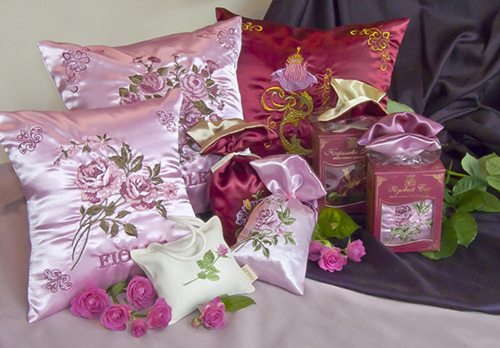
red clover(“porridge”, red clover) was used in aromatherapy in ancient times. It has antiviral, antibacterial, stimulating properties. It is useful for headaches, especially migraines, for hypertension, makes it easier to breathe when coughing, and for asthma. To fill the pillow, use the flowering heads of the plant, which are harvested in June - September.
Peppermint improves cardiac and brain activity, calms during stress, depression, relieves excessive excitement, tones up in a depressed state. A pillow with mint is especially useful for hypertensive patients, it is used to prevent myocardial infarction. All types of mint have medicinal properties. Collect leaves and flowering tops of mint during flowering (from late June to September), preferably in the morning.
birch leaves have antibacterial properties, strengthen the immune system. A pillow with birch leaves is an excellent prevention of colds, helps with headaches. It is best to harvest leaves in May during the flowering of the tree.
Black elderberry flowers used for the treatment primitive people. different peoples attributed to this plant exactly the opposite magical properties. Phytoncides of black elderberry have antibacterial and anti-inflammatory properties. A pillow with elderberry will help with colds, flu, ease breathing, and relieve headaches. Inflorescences are collected at the time of flowering.
Melissa(lemon mint) has unique medicinal properties: antiviral, anti-inflammatory, antimicrobial, antidepressant. Pillow with lemon balm strengthens the immune system. It is good for insomnia, neuroses, headaches, colds, flu, as a prevention and treatment of heart disease, makes it easier to breathe during sleep. Melissa is harvested during the flowering period.
pharmaceutical camomile- the oldest medicinal plant, has sedative, antiseptic, antibacterial properties. A pillow with chamomile is used for insomnia, neuroses, depression, for heart diseases, as a prevention of colds, facilitates breathing during sleep, and eliminates headaches and other pains. Flowers-heads or the entire aerial part of chamomile are collected for pillows during flowering from May to July.
Wormwood(chernobyl) - the oldest medicinal plant. It is an anti-inflammatory agent, strengthens the immune system, restores efficiency, calms the nervous system, and facilitates breathing during sleep. Pillow with wormwood will help with insomnia, neurasthenia, depression, convulsions, headaches. It can be used to prevent and treat colds and viral diseases. Collect the tops of the plant about 20 cm long during flowering, the stems should not be thicker than 5 mm.
Lavender narrow-leaved belongs to the most ancient medicinal herbs. Researchers found it in Tutankhamun's sealed incense urn, lavender has retained its fragrance for three millennia! Lavender is a powerful antiseptic, natural antibiotic, analgesic. A pillow with lavender will improve heart function, relieve headaches, strengthen immunity and physical endurance, improve mental performance, calm nerves, and help cope with depression and insomnia. The flowering tops of the plant are harvested about 12 cm long in late June - early July. The most healing is the lavender collected on Ivan Kupala Day.
Motherwort heart Tibetan and Chinese medicine has been using for over 2000 years. “There is no better herb to make the soul cheerful, cheerful and happy!” This is how a physician of the Middle Ages describes the properties of motherwort. Pillow with motherwort will improve cardiac activity, normalize metabolism, strengthen immunity, stimulate the nervous system, and help cope with insomnia. Same prescription for recovery peace of mind suitable for adults too. Motherwort is harvested at the beginning of flowering (June-August). Cut buds and flowering tops about 40 cm long, the stem should be no thicker than 5 mm.
Herbal Options
To fill the pillow, you can use one herb or mix it with others. Herbalists recommend mixing plants that can enhance and complement each other's action.
- Mint, lemon balm, meadowsweet, sweet clover, tansy, hops - 1 part each, wormwood, yarrow - 2 parts each, lavender, laurel, chamomile - half a part.
- Lavender, verbena, hops - 150 g each, 2 tablespoons of violet root.
- 1 part sweet clover and tansy, half a part lavender.
- Wormwood - 2 parts, lemon balm, meadowsweet and peppermint - 1 part each, chamomile - half a part.
- Yarrow and chamomile - 1 part each, rosemary - 3 parts.
You can make your own herbs. In this case, you will be sure of their quality, expiration date, originality. The downside will be the cost of time and effort. Of course, not everyone has the opportunity and desire to take a walk in nature in order to combine relaxation with a useful activity.
Lightweight and more fast way stock up on herbs - go to the pharmacy, since the range of pharmacy herbs is huge! When buying, pay attention to the expiration date.
How to make your own herbal pillow
The pillow can have different sizes: from regular to tiny. The more aromatic and active the plant (rosemary, sage, hop cones), the smaller the pad should be. Your imagination will tell you the shape: round, square, oval. If you have cervical osteochondrosis, the form of a roller is preferable, fill it with herbs more tightly.
For the main pillowcase (cover or pillowcase), only natural (“breathable”) and dense fabrics (cotton, linen, teak) are used so that the fillers do not seep and prick the face and neck.
Sew a pair of removable pillowcases from cambric, poplin, calico, silk. They can be worn over the cover, and changed for washing.
A feature and disadvantage of an aromatic pillow is the rapid caking of herbs. To avoid this, herbs are used that keep their shape - sedge, heather, bracken, straw. The addition of these herbs also helps to avoid overdosing when you want to have a big pillow, and the selected herbs are strong (rosemary, sage, hop cones) and strong-smelling (mint, oregano, elderberry).
fragrant pillows, stuffed with herbs from meadows and fields - not news, many have heard of such wonderful accessories for recreation. What if we try to make such pillows with your own hands?
Once upon a time in the book by V. A. Ivanchenko on hardening, I came across information about pillows made from thyme (Bogorodskaya grass). Since the details of the manufacture of such pillows was not in the book (except that there is an effect on the body of antiseptics - thymols, volatile phytoncides and fragrant essential oils), but it became very interesting - what are fragrant pillows, a search began in libraries and on the net.
I suggest you get acquainted with the materials on fragrant pillows: compositions for stuffing, production, options for use, application.
Traditionally, herbal pillows have been used to treat insomnia.
*To fall asleep without problems, you can make a pillow of hop cones (3 parts), laurel (1 part) and fern (2 parts) or fern (3 parts) hop cones (2 parts) laurel (2 parts) mint (1 part) as well as laurel and fern in a ratio of 1: 1
*If you suffer from frequent insomnia, then fragrant pillow from dried plants - geranium, valerian, rose and lemon will definitely help you.
* Therapeutic pillow for snoring contains: hop herb - 100 grams, tea tree leaf - 100 grams, violet root powder - 2 tablespoons, eucalyptus essential oil - 1-2 drops
* In case of lung diseases, a mixture of eucalyptus, birch, linden, heather is advised
* Calm the nerves of tansy, sweet clover, lavender
* Regulates the activity of the heart fragrant pillow of such a mixture of herbs: 2 parts of wormwood, 1 part of mint, 1 part of lemon balm, 1 part of meadowsweet ‚0.5 parts of chamomile
* Problems with blood pressure will help to solve: lilac, pine, spruce and young poplar leaves.
* In order to gain vivacity, tone and improve vision, a pillow stuffed with dried and crushed peels of mandarin, orange, lemon with the addition of lemon balm herb and citrus essential oils is suitable.
A few more options for stuffing for fragrant pillows.
1. Rosemary: mint: tansy 2:1:2 2.
2. Sheet black currant: rosehip petals:yarrow 2:3:1
3. Hop leaf: male fern: yarrow 2:3:1
4. Thyme: hop cones: wormwood at flowering 1:2:1
5. Wormwood: thyme: poplar leaf 1:1:2
6. Oregano: hop leaf: tansy 1:3:2
7. Male fern: sand immortelle: mint: pine needles 3:1:3:3
* To make an exclusive gift worth stuffing sofa cushion carnation, rose petals, lavender with the addition of essential oils. This composition purifies the air in the room. And if you decorate the pillow with rhinestones, embroidery, appliqué... then, of course, such a wonderful gift cannot be found in the whole world.
Manufacturing:
1. Collect herbs (as an option - buy), dry. 2. Grind in a coffee grinder (or possibly another convenient way), mix well, 3. add essential oils (if used in your mixture to enhance the smell of one of the components, for example, lavender) and sew into a pillowcase made of dense fabric (so that the herbs do not prick), preferably natural, size 20 * 20 cm, 40*60 cm or as you wish. 4. In order for the pillow to keep its shape as a base, use sedge, straw, willow-herb fluff, heather.
Note: I met advice in the literature - do not grind herbs.
Application and use cases:
Always protect your herbal pillow from dampness. Its service life is 1-2 years.
You can put a fragrant pillow under a large pillow, next to a pillow, or directly under your head. You can sew pillows with herbs and put them on the battery - so in your house it will always smell deliciously like a meadow or a forest.
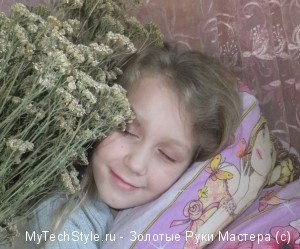
The scent of meadow herbs in your home
Finally, I will add that there are also mattresses made of herbs, mainly sedge with the addition of thyme and St. John's wort. (If you put a sprig of dried St. John's wort in your mattress, it will promote deep and healthy sleep.)
Useful properties and rules for using herbal pillows. Making and decorating products for sleep.
The content of the article:
Herbal sleep pillows are a great help for insomnia and many health problems. The era of rapid technological progress is forced to overstrain our brain huge number information. And modern man intuitively wants peace and relaxation. All this can be achieved by using herbal pillows in everyday life.
Description and purpose of herbal pads
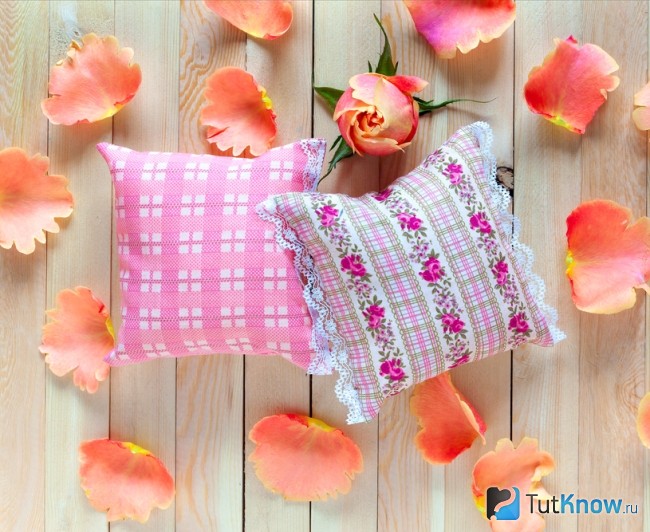
Our ancestors knew how to use the gifts of nature, such as medicinal herbs and plants, to good use. Herbal pillows - interesting option their use. This is new to us, but really just a well-forgotten old way to improve sleep.
What are they? In fact, it is a bag made of natural fabrics and stuffed with herbs, beautifully decorated with a removable pillowcase. The shape of the pillow depends on the imagination, preferences of the user and the purpose of the product.
The aromas of plants have a beneficial effect on the nervous system of a sleeping person, having their own healing effect, or even acting in a complex way in the case of a mixture of herbs. In addition to the healing effect, herbal pads also have aromatic and antibacterial properties. Their smell during the night is absorbed into the hair of the sleeping person, and also saturates the room, cleansing it from adverse microorganisms.
A traditional-shaped pillow can be used for normal sleep at home, putting it under the head, and in the form of a roller - in order to unload cervical region spine. Such orthopedic pads are very good for long trips for relaxation and unloading of the neck muscles.
Useful properties of herbal pillows for sleeping

A herbal sleep pillow is deservedly considered a wonderful remedy for getting rid of many problems, because most medicinal plants act in a complex way.
Here are the most common health problems treated with herbal pads:
- Insomnia and sleep disorders. Sleeping effect is the main property of herbal pillows. Depending on the plants used, they can simply induce sleep, or they can calm the nervous system, eliminating nightmares.
- Fatigue and restlessness. It happens that after sleep you do not feel rested. Chronic fatigue syndrome is a common condition for modern man. On a fragrant pillow, sleep will be strong, and the morning will be kind and cheerful, because the smells medicinal herbs, gently acting on the human body, relax and soothe.
- The work of the heart. The smells of herbs can speed up or slow down heart contractions. Skillfully using this property in the preparation of herbal preparations for pillows, you can resist hypertension and heart attack.
- The work of the bronchi and lungs. Even traditional medicine recognizes the benefits of inhalation with plant extracts. The impact of sleeping pillows is akin to this. Aromas of herbs with an antibacterial effect purify the air in the room and make it easier for the sleeper to breathe. Immunity improves, and recovery from flu and colds comes faster.
- Snore. The smell of hop cones is quite capable of defeating this pressing problem for many, which official medicine is not yet capable of.
Please note! Even a single-ingredient herbal pillow (not to mention a herbal-filled one) can help heal several ailments.
Contraindications to the use of herbal pillows

Prolonged inhalation of the smells of medicinal plants while sleeping on a herbal pillow is a real aromatherapy. Naturally, any therapeutic effect has its contraindications.
Considering the fact that the reaction to plants is individual for many, before making such a product for yourself or your loved ones, make sure that its future owner does not have any allergies and the prohibition of the attending physician. Pregnant and lactating women, as well as children, should be especially careful.
And even if the use of herbs is allowed, be careful when putting the kids to bed. Inquisitive babies are quite capable of ripping through the fabric to get to the rustling contents and taste it. And this can lead to at least nausea, vomiting and abdominal pain.
Another important point: be sure to listen to your feelings, and if you don’t like the smell of a plant, don’t use it, no matter how incredibly useful healing properties it has. You should get pleasure and positive sensations from sleeping on a herbal pillow!
The shelf life of such herbal joy is one year. Then it should be changed, because the aroma of herbs does not last forever. And if your pillow is damp, do not regret it and throw it away immediately, because the mold and fungus that will probably start in it in this case are very dangerous for health.
Important! On any herbal pillow, you can sleep no more than seven days in a row.
How to make an herbal sleep pillow
The healing properties of herbal pillows are due to what kind of plants they are filled with. Therefore, you need to carefully approach the selection and collection of herbs for their manufacture. Let's talk about everything in more detail.
Selection of herbs for filling the pillow
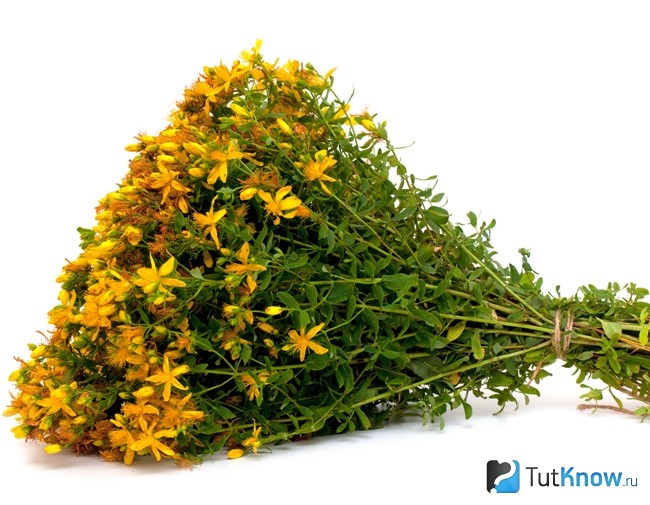
By filling your herbal pillow with certain plants, you thereby form its healing properties. But, again, in an effort to make it the most useful, do not forget that the smells should be pleasant for you. If the aroma of any herb is annoying, it is better to replace it with another with similar properties.
The choice of herbs for pads is huge:
- Anise. It will save you from nightmares by dulling your emotions, and also contribute to rejuvenation during sleep.
- Altey. It tends to ease breathing and coughing, so a herbal pillow stuffed with it is recommended for patients in the off-season.
- Orange. It has a tonic effect on the human body. evokes pleasant dreams about family and loved ones.
- Birch. The smell of its leaves strengthens the immune system, has antibacterial properties, and helps with headaches. Contraindicated in pregnant women.
- black elderberry. The smell of its inflorescences has anti-inflammatory and antibacterial properties, helps relieve pain, ease breathing and cure colds. It is not recommended for use by pregnant women and those who have diseases of the gastrointestinal tract.
- Valerian. Able to relieve stress and make sleep deep.
- Basil. In addition to helping to remember dreams, it also protects against mosquitoes, which are repelled by the aroma of this plant.
- Heather. It is very effective for combating insomnia and relieving increased nervous excitability.
- Carnation. This plant, like basil, helps to remember dreams and repels mosquitoes with its aroma. And also can restore the forgotten in your memory. It has a rather strong smell, so it should be used in small quantities.
- Geranium meadow. Do not confuse this plant with room pelargonium! It will help to calm down, relieve headaches and immerse you in a restful sleep. Strengthens the immune system, has an antibacterial and antiviral effect. Not recommended for children under six years of age and pregnant women.
- Angelica. Dreams inspired by this plant are considered prophetic.
- Oregano. This plant has a tonic effect. After sleeping peacefully all night on a herbal pillow from it, waking up, you will be cheerful and ready for great things. But be careful, the smell of oregano also reduces libido and has abortive properties.
- St. John's wort. It relieves depression, improves immunity, has bactericidal properties, can ease breathing, calm and give a healthy sleep. Pregnant and lactating, hypertensive patients, as well as children under 12 years of age, the use of this plant is contraindicated.
- Hyssop. Feel free to use this plant if you do not like the smell of oregano, they have similar tonic properties.
- Clover. Able to moderately reduce blood pressure, relieve headaches, has an antiviral and antibacterial effect. May ease breathing when coughing. Not recommended for pregnant women.
- lavender angustifolia. Helps with insomnia. Calms and relieves stress, improves the functioning of the heart and brain, relieves headaches, strengthens the immune system. Its smell is also able to drive away mosquitoes and moths from your bed, it is pleasant and unobtrusive, and it lasts for a very long time - from a sealed incense urn in the tomb of Tutankhamen, it was felt even after three thousand years! This plant is not contraindicated for children and allergy sufferers, but it is better not to use it for pregnant and lactating women.
- laurel. The dreams brought by him are pleasant and can become prophetic.
- Marjoram. It calms, relieves stress and relieves depression and longing.
- Melissa or lemon mint. In addition to sound sleep, this plant is able to bestow freshness and tranquility, relieve headache, toothache and heartache. Avicenna and Paracelsus considered it "delight of the heart", equating its value to pure gold. But for those who have low blood pressure, it is contraindicated.
- Peppermint. Calms the nervous system, improves the functioning of the brain and heart (working on the prevention of heart attack). It invigorates, relieves fatigue and headache, however, it is not in her power to relieve stress. Pregnant, lactating and children under seven years of age are not recommended for use.
- Wormwood or Chernobyl. It has anti-inflammatory and immune boosting properties. It will help to cope with fatigue and depression, speed up the metabolism, unobtrusively soothe, bringing vivid (and sometimes prophetic!) dreams. Facilitate breathing, restore efficiency, relieve convulsions. It will protect against blood-sucking insects and mice, scaring them away with its aroma. But do not overdo it with the dosage, the overly strong smell of this herb can cause a headache. Contraindicated in children under seven years of age and pregnant women.
- motherwort heart. This plant has been known as a medicinal plant for over 2000 years in Tibetan and Chinese medicine. It has an antibacterial, sedative, anticonvulsant and hemostatic effect. Improves heart activity, strengthens the immune system and stimulates the central nervous system, helping to overcome insomnia. In Russia, motherwort buds and stems were sewn into pillows for restless children. This medicinal herb those with low blood pressure and bradycardia.
- Rose. It will restore your strength during sleep and make dreams soothing and calm, prophetic or romantic.
- pharmaceutical camomile. Hypoallergenic, recommended for children. Peaceful sleep on such a herbal pillow is provided for everyone, because this ancient medicinal plant can cure depression, neuroses, ease breathing, relieve headaches and heartaches. But be careful when dosing! An excess can cause oppression of the central nervous system, cause coughing and headaches. Contraindicated in pregnant women, people with mental disorders.
- Rosemary. The smell of this plant awakens memory and clarifies the mind, tones up, can relieve headaches and help avoid nightmares. Do not overdo it with the dosage, as the aroma of rosemary is very strong.
- yarrow. The smell of this herb stimulates the immune system, saves from flu and respiratory diseases, and has bactericidal properties. Contraindicated in those with high blood pressure.
- Conifers. Aromas of needles of plants such as pine, cedar, fir or juniper have antiseptic properties, can relieve heart pain, alleviate mood swings, get rid of intrusive thoughts. Fir, for example, relaxes and brings peace, while cedar saves from bad dreams.
- Common hop (cones). This plant is able to relieve headaches with its aroma, soothe and inspire sleep even with prolonged and persistent insomnia. Hops have such a calming effect that they can even reduce potency, so men should use them with caution.
- Citrus. The smells of orange, lemon, grapefruit or tangerine not only tone and refresh, but also act as an aphrodisiac.
- Thyme or thyme. It has a powerful antiseptic and analgesic effect, has a slight hypnotic effect, bringing calm and sweet dreams. Strengthens the immune system, relieves depression. With a cold, the smell of this herb will help ease breathing. Contraindicated in pregnant and lactating women, ulcers and those who have problems with the kidneys and liver.
- Sage. The smell of this plant also has a tonic and healing effect, strengthens the immune system, relieves inflammation, and prevents viral and respiratory diseases. It can calm, give strength, make you think rationally. Pregnant, lactating and epileptics should not use this plant.
Collection of raw materials for filling the pillow
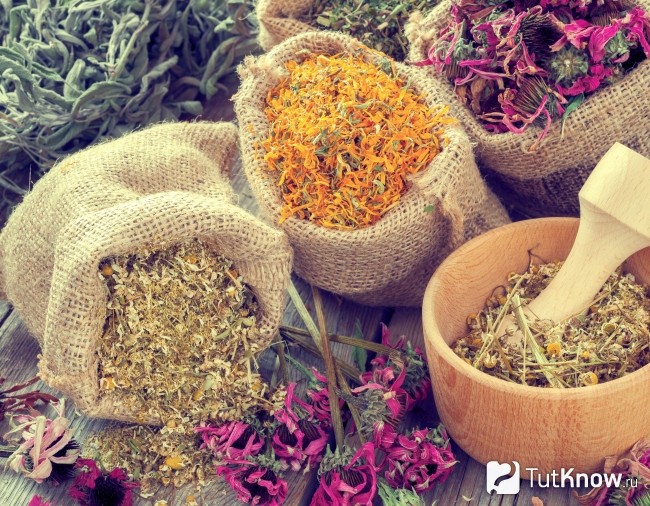
Where to get herbs to fill the pillow, everyone decides for himself. You can go the easy way and buy everything at the nearest pharmacy (don't forget about expiration dates!). And you can prepare herbs yourself, however, for this you will have to read additional literature, because each herb has its own collection time and harvesting features (where and how to dry), spend a lot of time and effort. But on the other hand, you will be sure of the environmental friendliness and effectiveness of raw materials.
What your herbal pillow will be stuffed with can be divided into two groups: odorous healing collection and odorless plant parts to add volume. Herbal collection should not be much, because an overly strong aroma can harm the sleeper. Herbs should be fresh (so they smell) and well dried (so they don't rot).
So that the pillow is not microscopic and one could really sleep on it, it is stuffed with parts of “neutral” plants (straw, sedge, willow-herb fluff, heather, bracken-fern), which are shaped. A pillow measuring 20x20 cm will need about half a kilogram of dry filler.
You can make a herbal collection yourself, not focusing on those proposed here, but following your preferences and tastes. Such a set of herbs will be truly unique! But ready-made recipes are still very convenient, because they make it easier to choose and save time.
Here is some of them:
- For mental fatigue: mixture in equal amounts sprigs of tansy, chamomile, blackcurrant and yarrow.
- For morning vivacity: rose petals, hop cones, sprigs of lavender and marjoram.
- To relax the muscles: equally leaves of laurel, sweet clover and wormwood.
- To improve bronchial function: rosemary, eucalyptus and birch leaves.
- To raise the tone: equally - lemon balm leaves, dried orange and lemon peel, 2 drops of lemon aroma oil, 1 drop of orange and tangerine.
- To find harmony: rose petals, leaves and stems of lavender and lemon balm, 4 drops of rose essential oil, 1 drop of lavender oil.
- For restless babies (ages 1 and up): a small amount of chamomile and thyme and 1-2 drops of lavender oil.
- From excessive sweating: chamomile flowers, calendula flowers and sage leaves.
- Royal Herbal Sleep Pillow: Peppermint, Valerian, Heather, St. John's Wort, Buckthorn, Chamomile, Shamrock, Hops, Primrose, and Lavender. The English king George III liked to sleep, inhaling the aroma of such plants.
- Hops, lavender and verbena - in equal amounts, violet root, ground into powder - 1/10 of the amount of hops;
- Laurel and fern;
- Fern, laurel and hop cones;
- Hop cones, fern, laurel and mint;
- Immortelle, pine needles, hop cones, mint, geranium, oregano, rose petals, bay leaf;
- Hop cones, ferns, geraniums;
- Pine needles, mint and hazel leaves, oregano;
- Thyme, mint and sage leaves, lavender sprigs;
- Sprigs of wormwood, mint leaves, meadowsweet and lemon balm, chamomile flowers;
- Tansy, sweet clover and lavender sprigs;
- Chamomile officinalis, rosemary and yarrow;
- Nettle, hops, oregano, calendula flowers and birch leaves;
- rosemary and chamomile;
- Hop cones, mint leaves, lemon balm, yarrow, laurel, sprigs of lavender, meadowsweet, sweet clover, wormwood, chamomile and tansy flowers;
- Sweet clover, lavender and tansy;
- Melissa, mint, wormwood, meadowsweet and medicinal chamomile;
- Melissa, thyme and valerian (in smaller amounts).
Remember! If you add oregano, mimosa, strawberries or jasmine to any collection, then their presence will enhance the effect of all other herbs. And be careful with the use of jasmine, as its overdose can provoke nightmares.
Fabric and decorative elements for making pillows
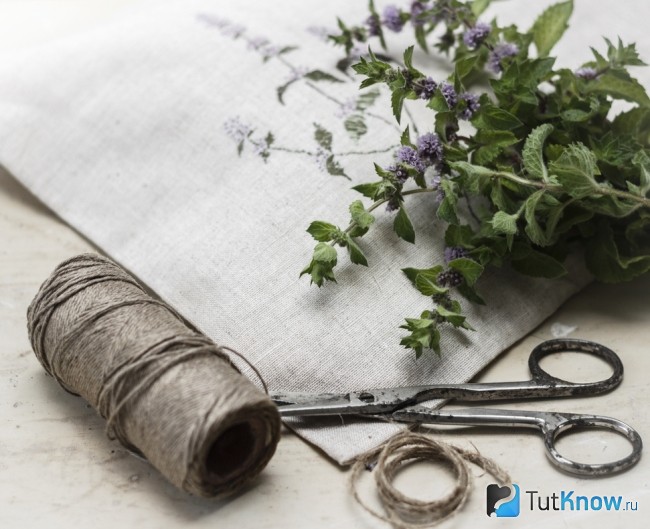
Making an herbal pillow is not difficult at all. From the tools you will need scissors, a ruler, a crayon for marking, threads and a needle, a paper funnel, a sewing machine (you can do without it, in the old days everything was done by hand).
There are also few materials: fabric for a pillowcase and a cover, a “dresser”, which, by analogy, can be called a “natravnik”, parts of plants to add volume and a healing fragrant collection, decor elements.
Let's consider some materials in more detail:
- Cover fabric. Naturally, it should be only natural, for example, linen is suitable. It is quite thin, but strong (2 times stronger than cotton and 4 times wool), easy to wash, hygroscopic, has a bactericidal effect, and therefore the fungus does not linger on it. Cotton is more common, more practical and cheaper than linen. Wool is the most hygroscopic of all fabrics, its ability to absorb moisture remarkably is undoubtedly a big plus, because dampness is strictly contraindicated for grassy pillow filling.
- Fabric for pillowcase. Suitable poplin, calico, cambric, satin, silk. From what type of fabric it is made, decide for yourself. Each of them is good in its own way. It all depends on the purpose of the pillow. For example, calico is inexpensive and has good wear resistance. Poplin is more pleasant to the touch, but its price is relatively low. Such fabrics are suitable for ordinary bed linen for your own needs. Batiste - light, transparent, but not strong enough and wear-resistant. From it you can sew a thing for a gift for a special occasion, for example, for a wedding, assuming that it will not be used very often. Satin is a fairly durable and more expensive fabric, it has a pleasant sheen and caresses to the touch, not like silk, but very similar. From such a fabric, as well as from silk, it is good to sew a gift version of the pillow.
- Threads. Very strong. Maybe even synthetic. These are not easy to break, and this is very important if the pillow is intended for a child.
- Decor. Considering the fact that the herbal pillow is a follow folk traditions, then it is logical to choose something authentic as a decor. For example, to embroider - and then you will need a needle and thread for embroidery. Moreover, the threads must be of high quality, not sticky. If you decide to decorate the product with beads, then choose those that will not harm the sleeper, for example, with some aggressive components of their lacquer coating. Lace, ribbons and braid should also be safe, made from natural materials.
Instructions for making a pillow from herbs

You must start work in good mood while thinking about something nice. All this will enhance the positive energy of the herbal pillow. You can, of course, not believe in such things, but our ancestors acted just like that, starting good deeds with songs and prayers. Anyway, positive attitude won't do any harm.
Instructions for making herbal pillow:
- Training. First, decide on the parameters of the product. Based on the amount of fabric you have, you determine the size of the pillow, and the shape based on its future functions. For those who have problems with the neck, for example, osteochondrosis, a pillow in the form of a roller is suitable. And for a gift for Valentine's Day, you can sew in the form of a heart.
- cutting. For the pattern, use thick waxed paper or graph paper. Using a pencil and a ruler, draw it, cut it out, put it on the fabric and circle it with chalk. Unfold, leaving 1-2 cm seam allowances.
- Sewing. Fold the pieces of the pattern right side in and stitch, leaving about 10 cm unsewn. Turn the cover inside out and use a paper funnel to fill it tightly with herbs, sew up the opening by hand. Sew the pillowcase in the same way, however, one side should be left unsewn, work the edges, think over the fastener option (a zipper is very convenient), and then decorate as you please.
Features of decorating a pillow made of herbs

So that the pillow pleases you not only healing properties, but also with their appearance, and also in order to not be ashamed to give it to someone, it will not be superfluous to do decor. It doesn't have to be complicated because it's functional and it's very uncomfortable to sleep on bulky embroidery or a bunch of bows.
Consider ways to decorate the pillow:
- Embroidery. The filling of the product can be individual, designed for a particular family member. Therefore, it would be appropriate to embroider a beautiful ligature of the owner's initials in one of its upper corners. The same applies to a pillow intended as a gift. An embroidered bouquet of medicinal plants will also look good. You can embroider with threads, beads or ribbons.
- Bows, ribbons, lace, braid. Delicate, not prickly, edging the pillow, they will decorate it and will not interfere during sleep. And in one of the corners, you can sew a loop of ribbon or braid so that the pillow can be hung.
- Buttons and beads. With their help, you can make a very interesting modern decor. For example, by sewing embroidered flowers as the centers. And so that they do not put pressure on the face of the sleeping person, the upper part of the pillow should be decorated.
- Patchwork (patchwork). In the old days, zealous housewives often did such things, because a whole piece of fabric was an expensive pleasure. Now patchwork is rather a way to give a second life to beautiful flaps. Textured fabric is a decor in itself, but it can also be arranged in the form plot picture or pick up abstract drawing in color to the interior of the bedroom.
How to use the aroma pad correctly

It is not enough to make a thing, you also need to be able to use it, even if it is a simple pillow. And if it’s herbal! .. There are certain rules here:
- Keep the smell. Such a pillow is used for a maximum of a week, and then they take a break. At this time, they put it in a bag and tightly tie it so that the aroma does not disappear.
- Shake Before Use. And you can even wrinkle and beat the pillow a little to enhance the smell of herbs.
- Change periodically. Do not store for more than one year. Change to a new one with a different composition of herbs. You can repeat the previous collection in a couple of years.
- Replace with "sleep bag". If it is still unusual for you to sleep on a herbal pillow, but its effect completely suits you, replace it with a small bag with the same herbs, put it at the head of the bed and enjoy! The most important thing is your comfort!
DIY herbal pillow - wonderful folk remedy from many health problems. filled healing power herbs and charged with the positive energy of good thoughts, she will great gift for your family and yourself.
So. The first thing to do is to choose the fabric for the pillow.
1. The fabric should be dense so that the grass does not prick.
2. The fabric must be natural - linen, cotton, wool, silk. For example, it is easiest for me to get linen and cotton. And yes, they have a wide variety of colors. Pure wool, like pure silk, is not easy to find in our area, and at times they bite at a cost. In addition, silk is often too thin, which may look beautiful, but such a pillow a) will prick b) can quickly tear.
Second and most important are herbs. The herbs for the filler are selected according to the desires and needs.
Herbs must be well dried and besides they must be fresh. Ideally, grasses should be cultivated without the use of chemical fertilizers. But, at least you need to find out all of a sudden, God forbid, they were sprayed with all sorts of rubbish. In this case, the herbs can be thrown out immediately, unless, of course, you want to get allergies, respiratory problems or dermatitis ... The herbs must be crushed and mixed before use.
The peculiarity of the herbal pillow is that the herbs quickly cake. Therefore, the basis for the pillow should be grass, which "holds its shape". And preferably neutral - sedge, straw, willow-herb fluff. However, I love heather. But it is not suitable for all collections. The pillow has little storage. A year or two is the maximum. Then you have to change. In addition, a huge danger for such a pillow is dampness. If the pillow is damp, throw it away without regret, otherwise the harm from it will be more than good. Fungi, mold - they are not even good for health.
When you are not using the pillow, it is advisable to put it in a plastic bag, this is necessary so that the smells do not disappear too quickly.
You can make a big enough herbal pillow and sleep on it, or you can make a smaller pillow and put it under your regular pillow. A pillow can also be placed on the battery, then its aroma will spread throughout the room. Remember to shake the pillow every time before using it. However, it should be remembered that long-term use of some herbs can lead to various bad disorders. Here, for example, hops are a very common pillow filler, but have unpleasant side effects- sweating, agitation, fear, fever, pain in the heart, shortness of breath, chronic eczema may occur. Aromas are also medicines and they must be taken correctly!
Naturally, depending on the herbs, the properties of the pillow will be different. Just as certain smells (such as fresh bread or fragrant roses) evoke pleasant memories in you, herbs also evoke associations in your memory. For example, the smell of thyme soothes and relaxes, clover - relieves fatigue, mint - enlightens the mind. Aromas of rosemary and thyme have a calming effect - they remove well nervous tension. The burdock has a good smell, the aroma of which has an antiviral effect and is recommended during epidemics of influenza and acute respiratory infections. The smell of lemon balm improves metabolism and has an anticonvulsant effect. The lemon-scented pillow has a refreshing and invigorating effect. Rose scented pillow has a harmonizing effect .
You can make a pillow for insomnia, you can make a pillow for certain dreams.
If you distribute herbs by properties, then in a simplified form it will look something like this(The following information is taken from various sources):
- Chamomile - brings restful sleep
- Hops (cones) - helps to cure insomnia, induces sleep, relieves headaches, soothes
- Peppermint - relieves headaches, soothes, adds caution and clarity. It should be borne in mind that the smell of mint invigorates, relieves fatigue, but does not relieve stress.
- Heather - treats insomnia and increased nervous excitability, has a fairly strong effect, you should be careful with it.
- Laurel - we give pleasant dreams, and sometimes prophetic dreams
- Thyme - helps to look through a dream into the future and the past, will bring a happy mood for the night
- Saffron - clairvoyance
- Cinnamon - helps to see the future and communicate with the right perfume in a dream
- Lavender - long lasting, repels moths, has a calming effect, relieves stress. Useful for insomnia, helps to communicate in a dream with the right spirits (according to other sources, it wards off evil spirits)
- Willow - brings the blessing of the moon
- Potentilla - will help to gain wisdom in a dream
- Muscat - helps to see the future in a dream
- Melissa - refreshes and soothes, relieves headaches and other pains, gives sound sleep. Help to see the future in a dream
- Wormwood - brings vivid dreams, amenable to reflective analysis, protects. It has a mild sedative effect. Wormwood fights fatigue and depression, speeds up metabolism.
- Nettle - protection during sleep, removes fears in dreams
- Marjoram - cleanses dreams of unnecessary energies, influences, relieves depression
- Rose - helps to restore strength during sleep, brings prophetic, pacifying, calm dreams, often of romantic content.
- Valerian - relieves tension before going to bed, calms, immerses in a deep sleep.
- Anise - emotionally dulls nightmares, promotes rejuvenation during sleep
- Sage - Can be used for tonic purposes, helps to heal in sleep, promotes the ability to calmly, rationally evaluate a dream
- Marshmallow - helps to heal while sleeping
- Yarrow - brings dreams of relatives and loved ones
- Orange - brings dreams of loved ones and relatives
- Basil - helps to remember astral flights, cleanses during sleep, protects
- Sunflower - helps to remember dreams after waking up
- Cloves - helps to remember dreams, use in small quantities due to the strong smell; restores the forgotten
- Rosemary - tones, relieves headaches, use in small quantities due to the strong smell; helps to avoid nightmares. Clears the mind and awakens memories.
- Fern - help from backache and sciatica
- Hyssop - tones,
- Oregano - tones,
- meadowsweet - induces sleep, relieves headaches, soothes
- Angelica - brings prophetic dreams and visions
- Fir - relaxation, tranquility
- Cedar - from unpleasant dreams
- Geranium - induces sleep, relieves headaches, soothes
- Camphor - awakens the memory of past lives, prophecy in a dream
- Citrus fruits - refresh and tone up, can act as an aphrodisiac.
- Coniferous smells of cedar, juniper or pine - act as antiseptics, relieve obsessive thoughts, soften mood swings, relieve heart pain.
- branches of tansy, chamomile, blackcurrant and yarrow - will help get rid of mental fatigue.
- Oregano, strawberry, mimosa, jasmine - enhance the effects of all herbs. With jasmine, you should also be careful, because it can provoke nightmares.
- Laurel, sweet clover and wormwood - help muscles relax
- Rosemary, birch and eucalyptus leaves - improve bronchial function.
- clover - moderately reduce pressure.
- Dill - helps to sleep
- White sage - to tune in to the world of spirits
- Chernobyl (wormwood) - brings visions, prophetic dreams, helps to remember dreams.
- Mullein - relieves bad dreams
- St. John's wort - exorcise spirits
- Cumin - brings restful sleep, psychic powers, attracts fairies
- Daffodils, lilies, lilies of the valley and bird cherry - can cause headaches and nightmares.
Some options for herbal pillows:
From insomnia
Lavender - 150 g
Verbena - 150 g
Hops - 150 g
From snoring
Hop grass - 100 g
Tea tree leaves - 100 g
Orris root powder - 2 tbsp. spoons
Eucalyptus oil - 1-2 drops
Tonic.
dried lemon and orange peels,
melissa leaves,
essential oils of lemon 2 k.,
orange 1 c.
tangerine 1 c.
Good dream
You can mix lemon balm, lemon thyme and a little valerian.
harmony, sleep
rose petals,
melissa leaves,
lavender grass,
rose essential oils 4 k.
lavender 1 c.
rose petals,
mint
clove powder.
Clove-scented pillow purifies indoor air well:
spicy cloves,
lavender herb, uh
rose essential oils 8 k.,
cloves 3 k.,
lavender 2 k.
lemongrass 1 c.
Pillow with the aroma of fragrant herbs has a refreshing and strengthening effect:
rosemary,
thyme,
sagebrush,
sage,
melissa leaves,
lavender,
essential oils of rosemary 3 k.,
Melissa 2 K.,
thyme 2 k.,
sage 1 k.
wormwood 1 k.
Pillows for insomnia
1) 1 cup verbena, 1 cup lavender, 1 cup hops, 2 tablespoons orris root powder
2) laurel and fern (1: 1)
3) laurel, fern, hops (1: 2: 3)
4) fern, hops, laurel, mint (3:2:2:1)
5) lavender - 150 g, verbena - 150 g, hops - 150 g, violet root powder - 2 tbsp. spoons
6) for babies (it is also recommended for newborns, but be aware!), when they do not sleep well, are naughty or sick, you can make a pillow with hops - 1 tbsp. spoon, tea tree leaves - 1 tbsp. spoon, violet root powder - 1 teaspoon, chamomile flowers 1 tbsp. spoon, lavender essential oil - 1-2 drops (the use of essential oils for children under one year old is a moot point!)
7) immortelle, pine needles, hop cones, mint, geranium, oregano, rose petals, bay leaf
8) sleeping pillow Geogra III: peppermint leaves, trefoil, hop cones, valerian root and rhizomes, St. John's wort and heather grass, buckthorn bark, chamomile flowers, lavender and primrose flowers
9) 1 part - fern, 2 parts - hops, 1 part - geranium
10) 2 parts - pine needles, 1 part - mint leaves, 1 part - oregano herbs, 2 parts - hazel leaves
11) 2 parts - thyme, 1 part - mint, 1 part - sage, 1 part - lavender
12) 2 parts of wormwood, 1 each - mint, lemon balm and meadowsweet, 1/2 part of chamomile
13) 1 part tansy and sweet clover, ½ part lavender
14) 3 parts chamomile, 1 each - rosemary and yarrow
15) Oregano, nettle, hops, birch leaves and calendula flowers
"Ecovillage. From the first steps to self-sufficiency.". published
- Burns, Robert - short biography
- The concept of common vocabulary and vocabulary of limited use
- Nancy Drew: The Captive Curse Walkthrough Nancy Drew Curse of Blackmoore Manor Walkthrough
- Deadpool - Troubleshooting
- Won't start How to Survive?
- What to do if bioshock infinite won't start
- Walkthrough Nancy Drew: Alibi in Ashes
- Spec Ops: The Line - game review, review Spec ops the line crashes on missions
- Room escape level 1 walkthrough
- Processing tomatoes with boric acid How much will 2 grams of boric acid
- Cucumber Grass (Borago)
- Bioinsecticide Lepidocid: purpose, properties and application procedure Lepidocide waiting period
- How to change the language to Russian in steam
- Dendrobium noble: room care
- Morphology of plants general concepts - document
- Planting, propagation and care of bamboo at home, photo Growing bamboo from seeds
- How to strengthen the cellular signal for the Internet in the country
- Sanskrit reveals the forgotten meaning of Russian words (2 photos)
- The oldest language Sanskrit programming language of the future Dead language Sanskrit
- Who has dominion over all the earth?









